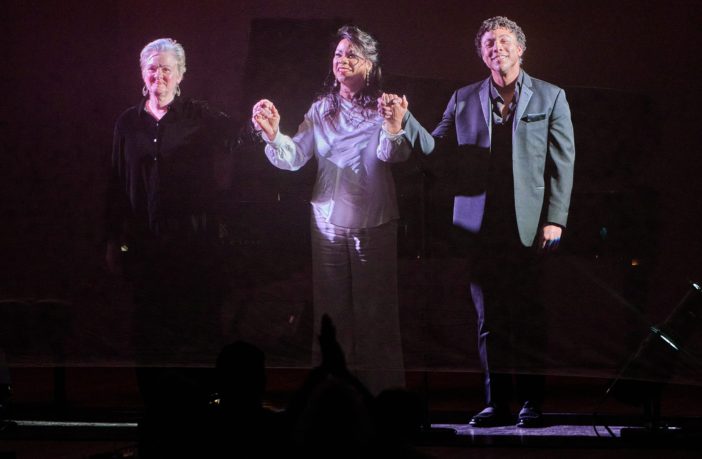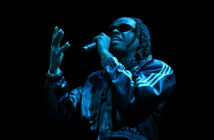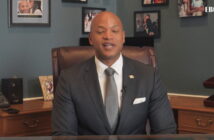There’s a reason the phrase “King Cotton” exists. According to Historian Sven Beckert in a 2014 article for The Atlantic, by the dawn of the Civil War, cotton production by enslaved people in America “by multiple measures—the sheer numbers employed, the value of output, profitability—the cotton empire had no parallel.” He went on to say, “In 1862, fully 20 million people worldwide…were involved in the cultivation of cotton or the production of cotton cloth…one-tenth of all British capital was invested in it, and close to one-half of all exports consisted of cotton yarn and cloth. Whole regions of Europe and the United States had come to depend on a predictable supply of cheap cotton.” In light of this and in light of the numerous films made about slavery, it is interesting that, blaxploitation comedy Cotton Comes To Harlem notwithstanding, no one has created a serious vehicle with the commodity of cotton at its center—until now.
Last week the song cycle (a group of songs that are designed to be performed together that usually have a theme but not a traditional plot) called “COTTON” was performed at the 92nd Street Y. Starring opera icon Denyce Graves (Carmen, Samson et Dalila) and Drama Desk nominee Justin Austin (Hamlet, Fire Shut Up in My Bones), the production was inspired by images shot by celebrated photographer, painter, printmaker, and lithographer John Dowell, whose artwork is represented in the permanent collections of over 70 museum and public collections.
Dowell’s haunting images of South Carolina cotton fields captured in his 2018 exhibit “Cotton: The Soft, Dangerous Beauty of the Past,” loom over the entire production. The work was composed by the prolific Damien Geter and performed by Graves with exciting rising star baritone Justin Austin, with original poems by a number of contemporary poets.
Taking place in the wood-paneled Kaufmann Concert Hall, the program was a multidisciplinary display of video, still images, and live voice. There was live piano accompaniment by Laura Ward, who also co-founded Lyric Fest, who originally commissioned the production. The program began with a John Dowell voiceover prologue, along with a carousel of his images projected onto a triptych screen made of a grayish mesh that encompassed the entire length of the stage, and almost the entire height. He discusses his relationship with the images he shot, his narration often eliciting laughter from the packed audience.
RELATED: NY born & bred opera singer Justin Austin shines in ‘COTTON’ at 92Y
Following Dowell was a succession of poets performing work they created in response to his photographs: Nikki Giovanni, Marc Bamuthi Joseph, Afaa Michael Weaver, Lauren Alleyne, Charlotte Blake Alston, Glenis Redmond, Alora Young, and Trapeta Mayson were performed against the backdrop of Dowell’s stunning imagery, many of them overlaid with, or overlaying, other images such as contemporary urban landscapes, abstract images, or woodcut illustrations of Black women apparently from the antebellum period.
These images of the women outfitted in white dresses and head wraps gave them an angelic, ephemeral appearance that evoked an inherent humanity, heroism, femininity, and, of course, resilience. They are similar in technique to the work of Elizabeth Catlett though less “grounded” and more airy and ethereal in feel. Video was paused at the conclusion of each poem and Graves and Austin took turns following with a performance in song.
There was an interesting juxtaposition between the performances of the poets, Graves, and Austin. The poets were recorded performing in everyday clothing, infusing their performances with rhythms, beats, and gesticulations of jazz, R&B, hip-hop, and other forms associated with spoken word poetry. After each poet’s performance, the videos were poised so Austin and Graves, outfitted in formal suits (she in all white, and he in all black), performed using the same text as their librettos, bathing their words in a delicate, determined, soaring spirituality. One of the recurring images across different poems is a street sign for Wall St. Of course Wall Street was once the site of a slave market. But the image, overlayed by images of cotton, directly connects the importance of enslaved labor with the modern world economy and the wealth and economic domination of cities like New York and nations like the U.S. and England. Though cotton is a ready metonym for slavery and all its horrors, what is often not connected is the astronomical economic value, and thus, global power, attached to the labor itself, which Dowell does in his photography and by extension, what the “COTTON” production reminds us of as well.
Like this:
Like Loading…



